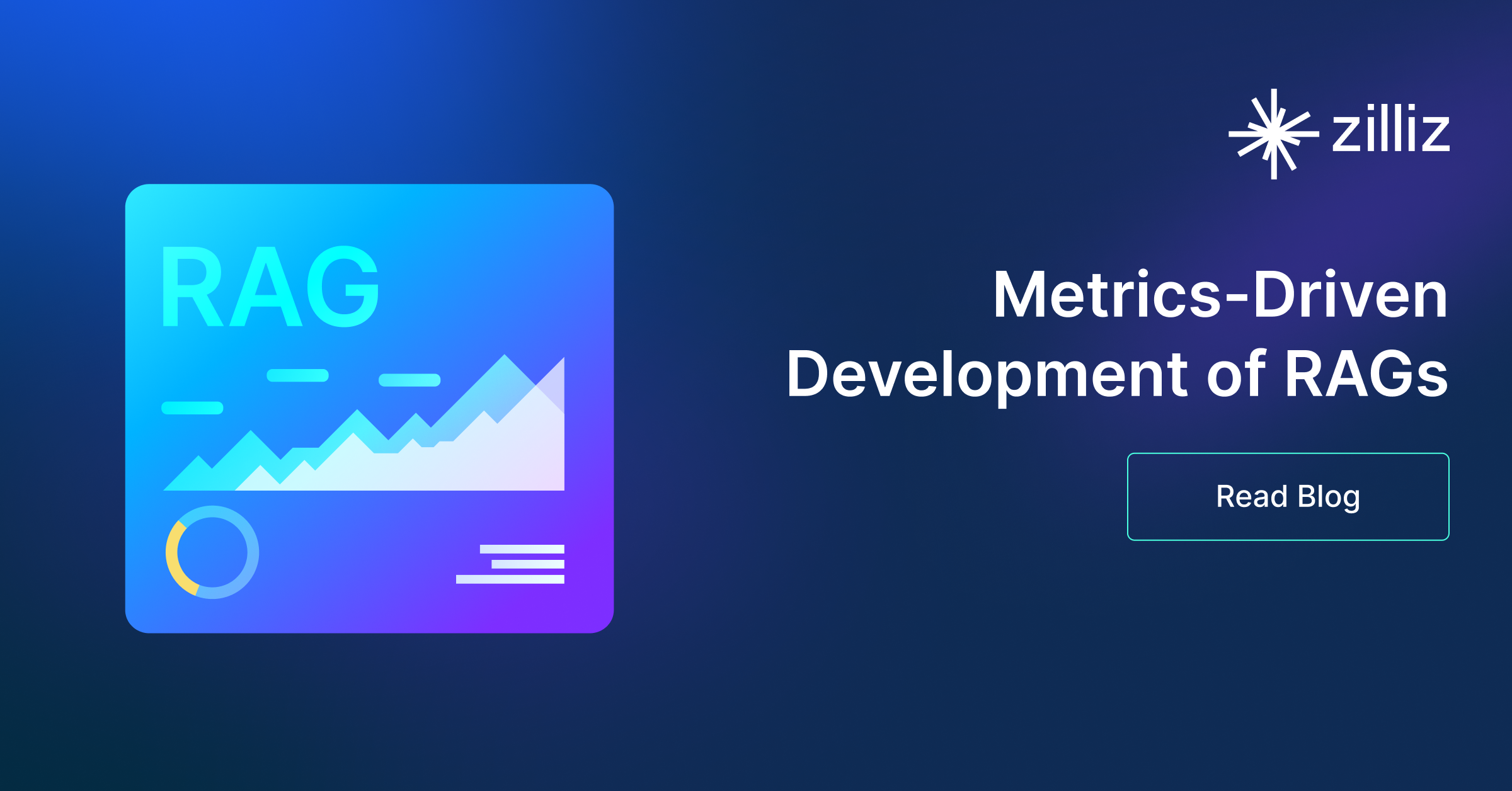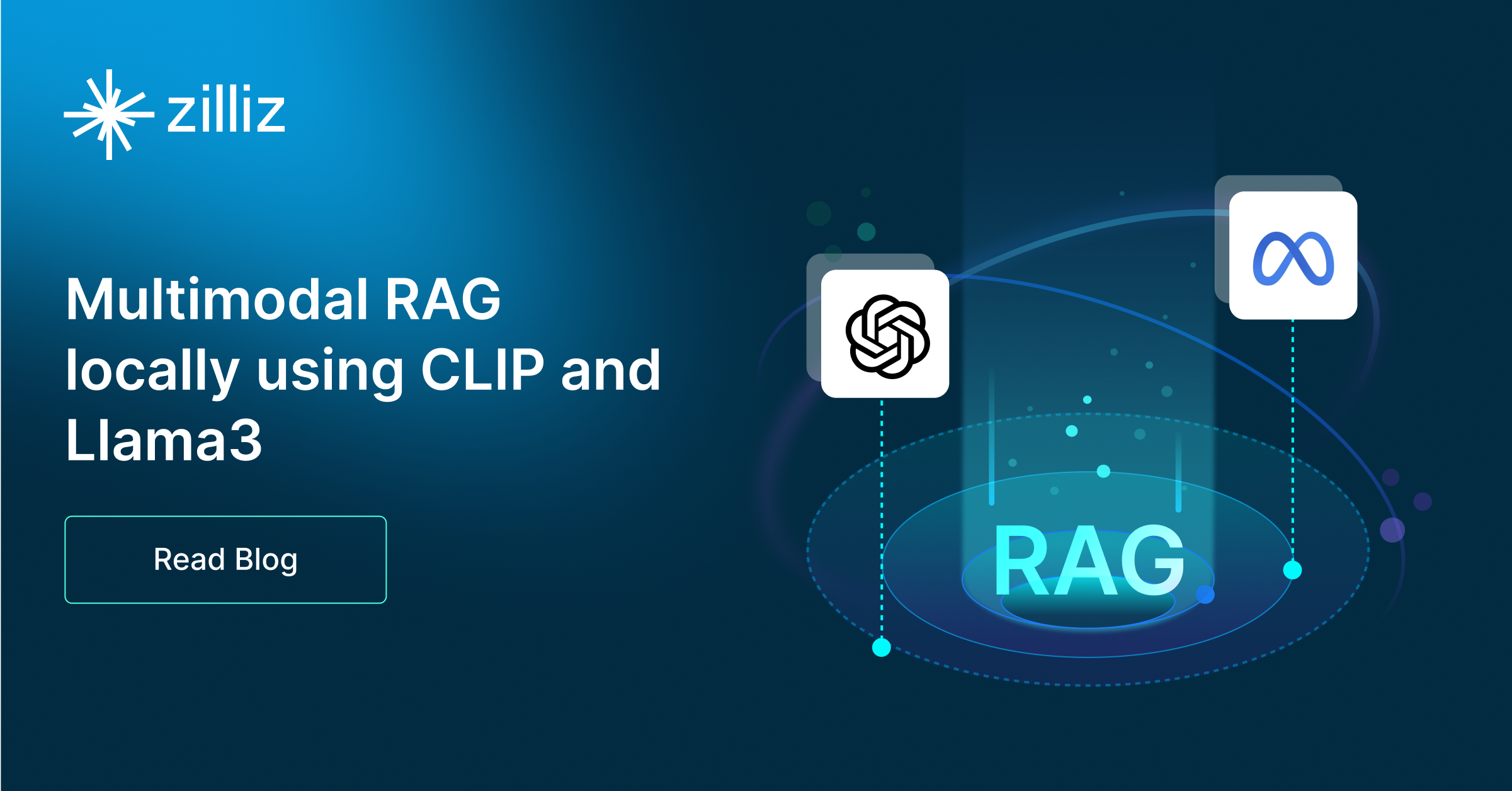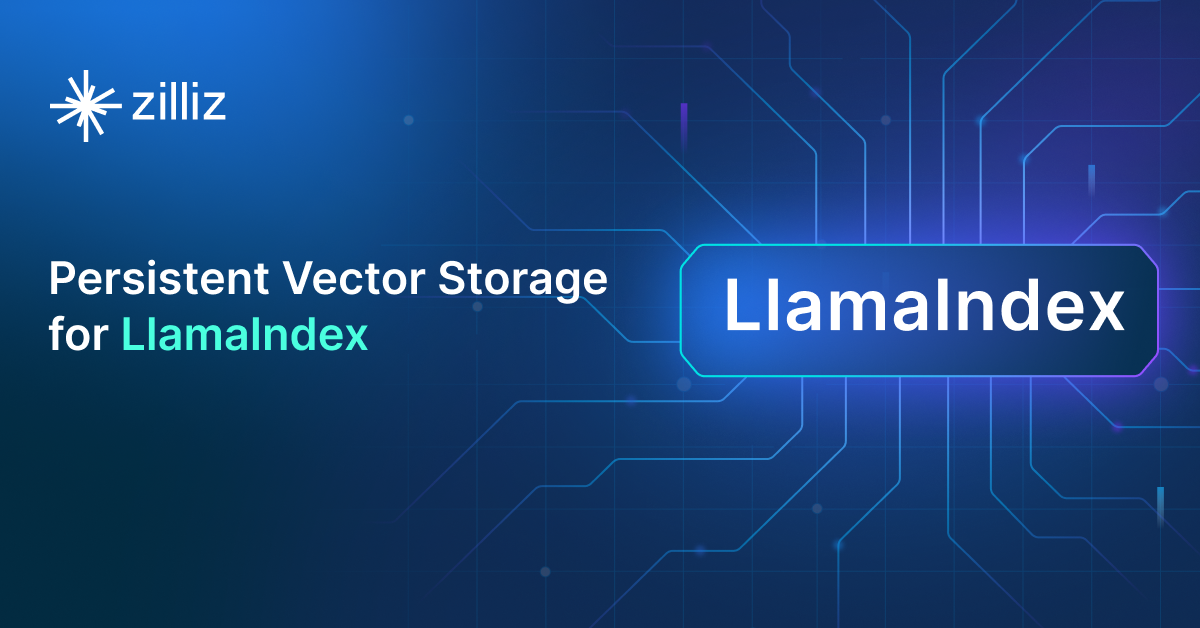Build RAG Chatbot with Haystack, Pgvector, NVIDIA Llama 3 70B Instruct, and Optimum all-mpnet-base-v2
Introduction to RAG
Retrieval-Augmented Generation (RAG) is a game-changer for GenAI applications, especially in conversational AI. It combines the power of pre-trained large language models (LLMs) like OpenAI’s GPT with external knowledge sources stored in vector databases such as Milvus and Zilliz Cloud, allowing for more accurate, contextually relevant, and up-to-date response generation. A RAG pipeline usually consists of four basic components: a vector database, an embedding model, an LLM, and a framework.
Key Components We'll Use for This RAG Chatbot
This tutorial shows you how to build a simple RAG chatbot in Python using the following components:
- Haystack: An open-source Python framework designed for building production-ready NLP applications, particularly question answering and semantic search systems. Haystack excels at retrieving information from large document collections through its modular architecture that combines retrieval and reader components. Ideal for developers creating search applications, chatbots, and knowledge management systems that require efficient document processing and accurate information extraction from unstructured text.
- Pgvector: an open-source extension for PostgreSQL that enables efficient storage and querying of high-dimensional vector data, essential for machine learning and AI applications. Designed to handle embeddings, it supports fast approximate nearest neighbor (ANN) searches using algorithms like HNSW and IVFFlat. Since it is just a vector search add-on to traditional search rather than a purpose-built vector database, it lacks scalability and availability and many other advanced features required by enterprise-level applications. Therefore, if you prefer a much more scalable solution or hate to manage your own infrastructure, we recommend using Zilliz Cloud, which is a fully managed vector database service built on the open-source Milvus and offers a free tier supporting up to 1 million vectors.)
- NVIDIA Llama 3 70B Instruct: A high-performance AI model optimized by NVIDIA for complex instruction-following tasks, combining Meta's Llama 3 70B architecture with NVIDIA’s hardware-accelerated efficiency. Strengths include rapid inference, scalability on GPUs, and nuanced context understanding. Ideal for enterprise-grade chatbots, technical support automation, and data-driven decision-making in resource-intensive environments.
- Optimum all-mpnet-base-v2: A high-performance sentence-transformers model optimized for semantic textual similarity, offering robust multilingual embeddings. Its strengths include efficient inference, scalability, and state-of-the-art accuracy in tasks like semantic search, clustering, and retrieval-augmented generation (RAG). Ideal for enterprise applications requiring fast, precise text analysis across diverse languages and domains.
By the end of this tutorial, you’ll have a functional chatbot capable of answering questions based on a custom knowledge base.
Note: Since we may use proprietary models in our tutorials, make sure you have the required API key beforehand.
Step 1: Install and Set Up Haystack
import os
import requests
from haystack import Pipeline
from haystack.components.converters import MarkdownToDocument
from haystack.components.preprocessors import DocumentSplitter
from haystack.components.writers import DocumentWriter
Step 2: Install and Set Up NVIDIA Llama 3 70B Instruct
To start using models self-hosted with NVIDIA, we need to install the nvidia-haystack package first.
pip install nvidia-haystack
To use LLMs with NVIDIA, you need to specify the correct api_url and your API key. You can get your API key directly from the catalog website. You also need to get an NVIDIA API key to build this pipeline. Here, we will use the NVIDIA_API_KEY environment variable by default. Otherwise, you can pass an API key at initialization with api_key, as in the following example.
from haystack.utils.auth import Secret
from haystack_integrations.components.generators.nvidia import NvidiaGenerator
generator = NvidiaGenerator(
model="meta/llama3-70b-instruct",
api_url="https://integrate.api.nvidia.com/v1",
api_key=Secret.from_token("<your-api-key>"),
model_arguments={
"temperature": 0.2,
"top_p": 0.7,
"max_tokens": 1024,
},
)
generator.warm_up()
Step 3: Install and Set Up Optimum all-mpnet-base-v2
Haystack's OptimumTextEmbedder embeds text strings using models loaded with the HuggingFace Optimum library. It uses the ONNX runtime for high-speed inference. Similarly to other Embedders, this component allows adding prefixes (and suffixes) to include instructions. For more details, refer to the Optimum API Reference.
pip install optimum-haystack
from haystack_integrations.components.embedders.optimum import OptimumTextEmbedder
from haystack.dataclasses import Document
from haystack_integrations.components.embedders.optimum import OptimumDocumentEmbedder
text_embedder = OptimumTextEmbedder(model="sentence-transformers/all-mpnet-base-v2")
text_embedder.warm_up()
document_embedder = OptimumDocumentEmbedder(model="sentence-transformers/all-mpnet-base-v2")
document_embedder.warm_up()
Step 4: Install and Set Up Pgvector
To quickly set up a PostgreSQL database with pgvector, you can use Docker:
docker run -d -p 5432:5432 -e POSTGRES_USER=postgres -e POSTGRES_PASSWORD=postgres -e POSTGRES_DB=postgres ankane/pgvector
To use pgvector with Haystack, install the pgvector-haystack integration:
pip install pgvector-haystack
import os
from haystack_integrations.document_stores.pgvector import PgvectorDocumentStore
from haystack_integrations.components.retrievers.pgvector import PgvectorEmbeddingRetriever
os.environ["PG_CONN_STR"] = "postgresql://postgres:postgres@localhost:5432/postgres"
document_store = PgvectorDocumentStore()
retriever = PgvectorEmbeddingRetriever(document_store=document_store)
Step 5: Build a RAG Chatbot
Now that you’ve set up all components, let’s start to build a simple chatbot. We’ll use the Milvus introduction doc as a private knowledge base. You can replace it your own dataset to customize your RAG chatbot.
url = 'https://raw.githubusercontent.com/milvus-io/milvus-docs/refs/heads/v2.5.x/site/en/about/overview.md'
example_file = 'example_file.md'
response = requests.get(url)
with open(example_file, 'wb') as f:
f.write(response.content)
file_paths = [example_file] # You can replace it with your own file paths.
indexing_pipeline = Pipeline()
indexing_pipeline.add_component("converter", MarkdownToDocument())
indexing_pipeline.add_component("splitter", DocumentSplitter(split_by="sentence", split_length=2))
indexing_pipeline.add_component("embedder", document_embedder)
indexing_pipeline.add_component("writer", DocumentWriter(document_store))
indexing_pipeline.connect("converter", "splitter")
indexing_pipeline.connect("splitter", "embedder")
indexing_pipeline.connect("embedder", "writer")
indexing_pipeline.run({"converter": {"sources": file_paths}})
# print("Number of documents:", document_store.count_documents())
question = "What is Milvus?" # You can replace it with your own question.
retrieval_pipeline = Pipeline()
retrieval_pipeline.add_component("embedder", text_embedder)
retrieval_pipeline.add_component("retriever", retriever)
retrieval_pipeline.connect("embedder", "retriever")
retrieval_results = retrieval_pipeline.run({"embedder": {"text": question}})
# for doc in retrieval_results["retriever"]["documents"]:
# print(doc.content)
# print("-" * 10)
from haystack.utils import Secret
from haystack.components.builders import PromptBuilder
retriever = PgvectorEmbeddingRetriever(document_store=document_store)
text_embedder = OptimumTextEmbedder(model="sentence-transformers/all-mpnet-base-v2")
text_embedder.warm_up()
prompt_template = """Answer the following query based on the provided context. If the context does
not include an answer, reply with 'I don't know'.\n
Query: {{query}}
Documents:
{% for doc in documents %}
{{ doc.content }}
{% endfor %}
Answer:
"""
rag_pipeline = Pipeline()
rag_pipeline.add_component("text_embedder", text_embedder)
rag_pipeline.add_component("retriever", retriever)
rag_pipeline.add_component("prompt_builder", PromptBuilder(template=prompt_template))
rag_pipeline.add_component("generator", generator)
rag_pipeline.connect("text_embedder.embedding", "retriever.query_embedding")
rag_pipeline.connect("retriever.documents", "prompt_builder.documents")
rag_pipeline.connect("prompt_builder", "generator")
results = rag_pipeline.run({"text_embedder": {"text": question}, "prompt_builder": {"query": question},})
print('RAG answer:\n', results["generator"]["replies"][0])
Optimization Tips
As you build your RAG system, optimization is key to ensuring peak performance and efficiency. While setting up the components is an essential first step, fine-tuning each one will help you create a solution that works even better and scales seamlessly. In this section, we’ll share some practical tips for optimizing all these components, giving you the edge to build smarter, faster, and more responsive RAG applications.
Haystack optimization tips
To optimize Haystack in a RAG setup, ensure you use an efficient retriever like FAISS or Milvus for scalable and fast similarity searches. Fine-tune your document store settings, such as indexing strategies and storage backends, to balance speed and accuracy. Use batch processing for embedding generation to reduce latency and optimize API calls. Leverage Haystack's pipeline caching to avoid redundant computations, especially for frequently queried documents. Tune your reader model by selecting a lightweight yet accurate transformer-based model like DistilBERT to speed up response times. Implement query rewriting or filtering techniques to enhance retrieval quality, ensuring the most relevant documents are retrieved for generation. Finally, monitor system performance with Haystack’s built-in evaluation tools to iteratively refine your setup based on real-world query performance.
pgvector optimization tips
To optimize pgvector in a Retrieval-Augmented Generation (RAG) setup, consider indexing your vectors using GiST or IVFFlat to significantly speed up search queries and improve retrieval performance. Make sure to leverage parallelization for query execution, allowing multiple queries to be processed simultaneously, especially for large datasets. Optimize memory usage by tuning the vector storage size and using compressed embeddings where possible. To further enhance query speed, implement pre-filtering techniques to narrow down search space before querying. Regularly rebuild indexes to ensure they are up to date with any new data. Fine-tune vectorization models to reduce dimensionality without sacrificing accuracy, thus improving both storage efficiency and retrieval times. Finally, manage resource allocation carefully, utilizing horizontal scaling for larger datasets and offloading intensive operations to dedicated processing units to maintain responsiveness during high-traffic periods.
NVIDIA Llama 3 70B Instruct optimization tips
Optimize inference speed by leveraging model quantization (e.g., 16-bit or 8-bit) to reduce memory usage without significant accuracy loss. Use NVIDIA’s TensorRT-LLM for kernel fusion and efficient GPU utilization, and enable dynamic batching to process multiple queries concurrently. Fine-tune retrieval relevance thresholds to balance precision and recall, minimizing unnecessary context. Cache frequent retrieval results and precompute embeddings. Profile memory usage to avoid bottlenecks, and employ mixed-precision training if fine-tuning. Regularly update drivers and libraries (e.g., CUDA, PyTorch) to leverage hardware acceleration and software optimizations.
Optimum all-mpnet-base-v2 optimization tips
To optimize Optimum all-mpnet-base-v2 in a RAG setup, preprocess input text by trimming redundant whitespace, normalizing casing, and splitting long documents into smaller chunks (≤512 tokens) to align with the model’s max sequence length. Use batch processing for embeddings to leverage GPU parallelism, adjusting batch size based on GPU memory. Quantize the model via ONNX Runtime or FP16 precision for faster inference. Cache frequently accessed embeddings to reduce recomputation, and pair with efficient vector search libraries (e.g., FAISS) for low-latency retrieval. Regularly update and prune the document corpus to maintain relevance.
By implementing these tips across your components, you'll be able to enhance the performance and functionality of your RAG system, ensuring it’s optimized for both speed and accuracy. Keep testing, iterating, and refining your setup to stay ahead in the ever-evolving world of AI development.
RAG Cost Calculator: A Free Tool to Calculate Your Cost in Seconds
Estimating the cost of a Retrieval-Augmented Generation (RAG) pipeline involves analyzing expenses across vector storage, compute resources, and API usage. Key cost drivers include vector database queries, embedding generation, and LLM inference.
RAG Cost Calculator is a free tool that quickly estimates the cost of building a RAG pipeline, including chunking, embedding, vector storage/search, and LLM generation. It also helps you identify cost-saving opportunities and achieve up to 10x cost reduction on vector databases with the serverless option.
 Calculate your RAG cost
Calculate your RAG cost
What Have You Learned?
By diving into this tutorial, you’ve unlocked the magic of building a powerful RAG system from the ground up! You’ve seen how Haystack acts as the glue, elegantly orchestrating the entire pipeline—tying together retrieval, generation, and everything in between. With Pgvector, you now know how to harness PostgreSQL’s scalability to store and query vectors efficiently, turning your database into a lightning-fast semantic search engine. The Optimum all-mpnet-base-v2 embedding model became your trusty sidekick, transforming text into rich, meaningful vectors that capture context like a pro. And let’s not forget the star of the show: NVIDIA’s Llama 3 70B Instruct, which blew your mind with its ability to generate human-like, precise answers by weaving retrieved context into coherent, insightful responses. Along the way, you picked up pro tips like optimizing chunk sizes for balance between speed and accuracy, tweaking similarity thresholds for relevance, and even using the free RAG cost calculator to estimate expenses and avoid budget surprises. These tools aren’t just theoretical—they’re practical, battle-tested strategies to make your system lean and mean.
But here’s the best part: you’re now equipped to turn this knowledge into action. Imagine the applications you can build—intelligent chatbots that actually understand nuance, research assistants that sift through mountains of data in seconds, or creative tools that spark ideas you’ve never dreamed of. The tutorial wasn’t just about following steps; it was about empowering you to innovate. So go ahead—experiment fearlessly, iterate boldly, and let your curiosity lead the way. Tweak those parameters, test new datasets, and watch your RAG system evolve into something uniquely yours. The future of AI-driven solutions is yours to shape, and this is just the beginning. Ready, set, build—your next breakthrough is waiting! 🚀
Further Resources
🌟 In addition to this RAG tutorial, unleash your full potential with these incredible resources to level up your RAG skills.
- How to Build a Multimodal RAG | Documentation
- How to Enhance the Performance of Your RAG Pipeline
- Graph RAG with Milvus | Documentation
- How to Evaluate RAG Applications - Zilliz Learn
- Generative AI Resource Hub | Zilliz
We'd Love to Hear What You Think!
We’d love to hear your thoughts! 🌟 Leave your questions or comments below or join our vibrant Milvus Discord community to share your experiences, ask questions, or connect with thousands of AI enthusiasts. Your journey matters to us!
If you like this tutorial, show your support by giving our Milvus GitHub repo a star ⭐—it means the world to us and inspires us to keep creating! 💖
- Introduction to RAG
- Key Components We'll Use for This RAG Chatbot
- Step 1: Install and Set Up Haystack
- Step 2: Install and Set Up NVIDIA Llama 3 70B Instruct
- Step 3: Install and Set Up Optimum all-mpnet-base-v2
- Step 4: Install and Set Up Pgvector
- Step 5: Build a RAG Chatbot
- Optimization Tips
- RAG Cost Calculator: A Free Tool to Calculate Your Cost in Seconds
- What Have You Learned?
- Further Resources
- We'd Love to Hear What You Think!
Content
Vector Database at Scale
Zilliz Cloud is a fully-managed vector database built for scale, perfect for your RAG apps.
Try Zilliz Cloud for Free


